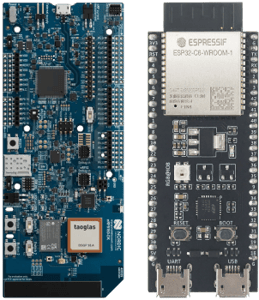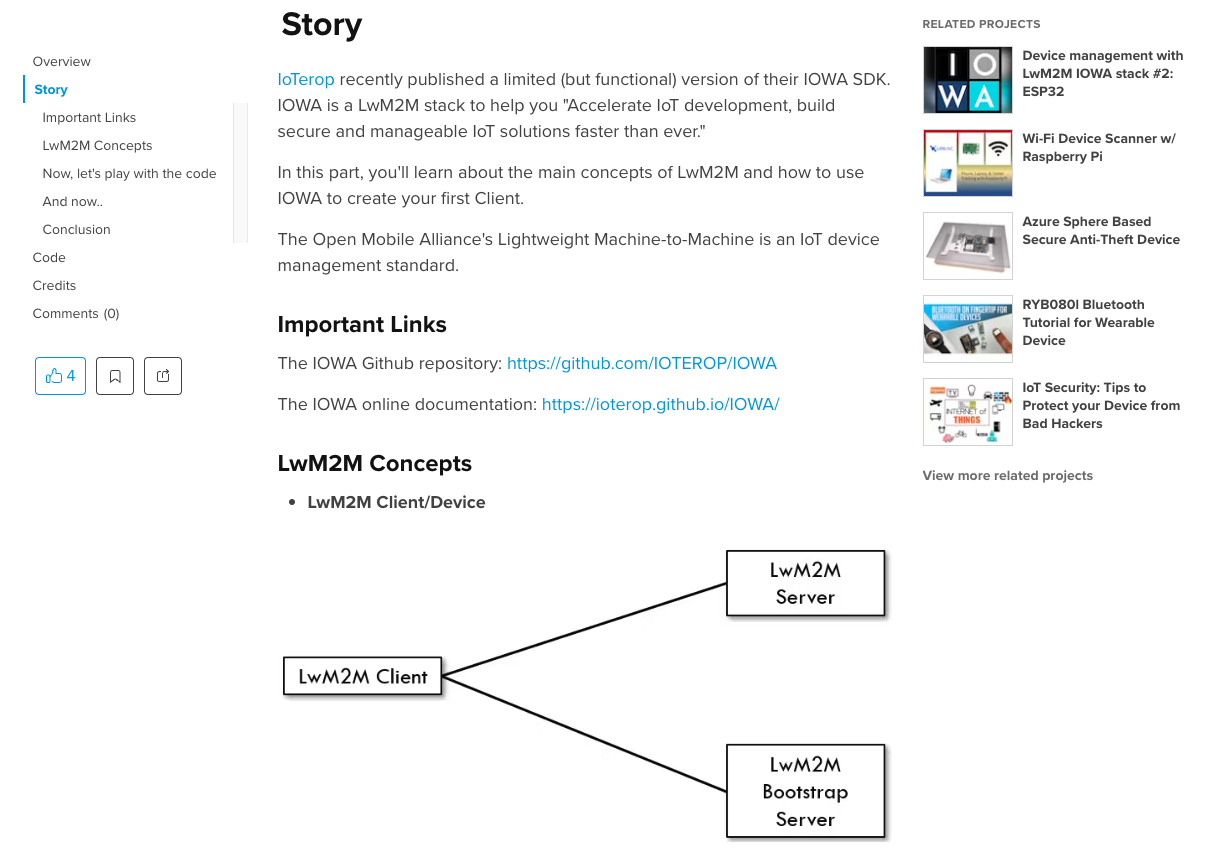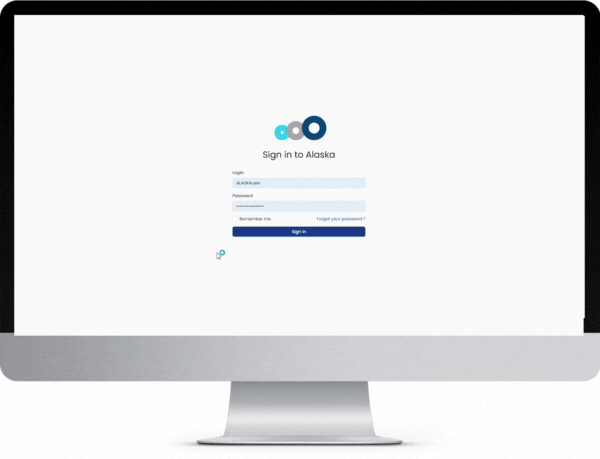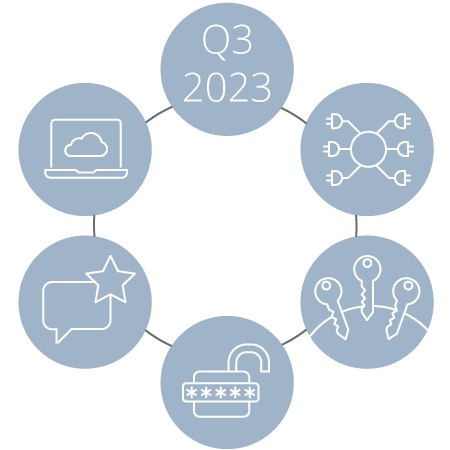Understand and Build IoT Solutions
IoT Solutions for Developers, by Developers
Whether you’re new to developing in IoT or know your way around, we’ve created this section to support you in your development journey. These are the resources you'll need to learn, experiment, and create a proof of concept using IOWA SDK and ALASKA IoT device manager — at no cost. We're here to help you create a reliable product that your organization and its customers can count on.
Start with IOWA
Software development kit
Fast-track your way to a working prototype or product in a fraction of the time with IOWA SDK. IOWA comes with an unmatchably small footprint and the flexibility to choose only the features you need.
Start with ALASKA
IoT Device Manager
ALASKA was built on a micro-service architecture, meaning that it was engineered with scalability in mind. Manage millions of devices effortlessly through zero-touch commissioning, firmware updates, and security, and much more.
IOWA: Start Now - Free!
Our GitHub page contains the features that you need to get started. Included in the evaluation version are:
-
IOWA-based LwM2M Client
-
LwM2M 1.0
-
TLV Data Format
-
Mandatory LwM2M Objects
-
CTO IPSO Objects
-
Custom Objects Creation
-
UDP Transport
-
DTLS Support
-
Muti Server Management
-
Source Code & C-Make
-
Logs

Development Environments

Ready to get started now? IOWA can be run on your laptop without a board in just 2 minutes on Windows, Mac, and Linux.
Development Boards

If you're ready to start experimenting, IOWA is prepackaged (flashed?) and ready to run on the following boards:
IOWA Tutorials
Tutorial #1: Quickly create a LwM2M client with the evaluation version of IOWA SDK

Use IOWA, a compact, LwM2M-compliant device management library to create your first LwM2M client.
Tutorial #2: Build a LwM2M client for ESP32 Dev Kit in just a few minutes

You'll learn how to use IOWA device management stack on ESP32 hardware.
Webinar Recording
Developer's Forum: Unlock Your Organization's IoT Device Management Capabilities with LwM2M
The benefits of using the Lightweight Machine to Machine (LwM2M) protocol to connect and manage IoT devices are noteworthy: reduced power and data consumption, firmware over the air (FOTA) updates and using latest security are just a few of the highlights. But what exactly is LwM2M, and how does it stack up against the other technologies, such as MQTT? How difficult is it to implement, and what are the implications for an engineering or dev team? Join us for this free webinar recording and discover the potential that LwM2M has to offer.
ALASKA: Start Now - Free!
Get the essentials you need to test ALAKSA with no payment required. Included in the Trial package are:
- Connect up to 5 devices
- Get started easily with our virtual client
- Collect and access device data
- Perform firmware updates
- And more (read here)
If you're looking for more robust capabilities, check out our Pilot or Production packages.

New ALASKA Features
We work on ALASKA each day of the week to make it even more robust, capable, and aligned to our user's needs. Here are our Q3 2023 updates:
-
API v3 Publication
-
Key Rotation Enhancement
-
No-Sec Device Management
-
CoAP Block-Mode Optimization
-
Enhancement of ALASKA UI

Webinar Recording
The Building Blocks of NB-IoT: DTLS, CoAP, OSCORE, and Other Important Cellular IoT Protocols
NB-IoT technology is growing rapidly around the world. This technology is the first LPWAN to offer end-to-end internet in both directions -- to and from the cloud. But due to the latency of NB-IoT, building a device requires different protocols than those typically used. During this webinar, we'll explore what the CoAP transport protocol is, and reasons to choose the DTLS secure link layer. We'll also cover the advantages of using the OSCORE security protocol, and how the LwM2M device management protocol uses these protocols. Finally, we will address how IoT managers can securely manage their devices without draining their battery or using large amounts of data.
Other IoT Related Content
- An Application-Layer Approach to End-to-End Security for the Internet of Things.
This paper from the Open Mobile Alliance outlines how LwM2M uses OSCORE to more efficiently secure IoT end-to-end, independent of network topography, at the applicative level with specific examples for different industries. - IoT Solution Protocol Developer Guide
This detailed paper from T-Mobile with lots of graphics and quantitative analysis calls out important differences between CoAP and MQTT developers must take into account when using NB-IoT as a transport mechanism. - LwM2M & MQTT Test Comparison from analyst group MachNation comparing the relative data reporting efficiency of MQTT and LwM2M. We feel however this is an inaccurate comparison. LwM2M incorporates device management services MQTT does not have. A fairer comparison would be CoAP to MQTT. Here is an infographic from IoTerop that outlines MachNation’s findings.
- Impact of CoAP and MQTT on NB-IoT System Performance
Research on how messaging profiles, including message size (byte count) and transport protocols like CoAP and MQTT impact network performance. - Open Mobile Alliance LwM2M 1.1 Presentation
All things LwM2M 1.1 - Lightweight M2M 1.1: Managing Non-IP Devices in Cellular IoT Networks
In depth whitepaper from Ericsson and T-Mobile on the needs of next-generation, hyper-efficient LPWAN IoT solutions.